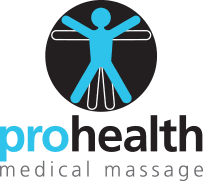What Is Therapeutic or Clinical Massage Therapy?
Therapeutic massage, also described as clinical massage therapy, by its simplest definition is the manipulation of the soft tissues of the body to gain a therapeutic response. It can increase metabolism and pain management, and at the same time, decrease healing time. By manipulating the soft tissues, massage enhances the movement of blood and lymph fluids in the body.
Therapeutic Massage
Therapeutic massage increases oxygen and nutrients to your body’s cells while assisting the removal of harmful by-products of metabolism, exercise, and inflammation. This helps muscles repair more efficiently with fewer restrictions. But what is a therapeutic response? Is it just physical or does it include a psychological aspect?
Massage treatment usually includes a combination of physiological and psychological improvement. Having any form of physical relief brought on by physical touch brings about a sense of well-being and relaxation. Anyone receiving a massage can tell you of the great sense of well-being after a massage. The mind and body are one, so one is reflective of the other.
In more detail, therapeutic massage or clinical massage is the scientific art and system of the assessment of and the manual application to the superficial soft tissue, muscles, tendons, ligaments, and fascia. Using the hand, foot, knee, elbow, and forearms for the systematic external application of touch, a massage therapist uses various techniques including stroking, friction, vibration, percussion, kneading, stretching, compression, or passive and active joint movements within the normal physiological range of motion.
Therapeutic massage also includes the adjunctive, external application of water (hydrotherapy by definition) at various temperatures for the purpose of establishing and maintaining good physical condition and health through normalizing and improving muscle tone, promoting relaxation, stimulating circulation, and producing therapeutic effects on the respiratory, circulatory, and nervous systems and the subtle interaction among all body systems. These intended effects are accomplished through the energetic and mind/body connections in a safe environment that respect the clients’ self-determined outcome of the treatment.
What Does All This Scientific Jargon Really Mean?
There are many techniques used in therapeutic massage to address a great number of conditions brought on by disease, physical trauma, and psychological conditions. These techniques include Swedish massage (effleurage and petrissage), manual lymph drainage, myofascial release, friction therapy, movement therapy, joint mobilization, neuromuscular facilitation, and trigger point therapy just to name a few.
Therapeutic massage is used in a variety of ways to treat numerous conditions including:
Musculoskeletal Conditions:
- Sprains (ligament injuries, attach bone to bone)
- Strains (tendon injuries, attach muscle to bone)
- Fractures
- Contusions
- Ligament and Meniscal Injuries (injuries affecting the knee)
Postural dysfunctions:
- Scoliosis
- Hyperlordosis
- Hyperkyphosis
- Patellofemoral Tracking Syndrome
- Iliotibial Band Contracture and Pes Planus (flat feet)
Peripheral nervous system:
- Nerve Lesions (eg. sciatica)
- Bell’s Palsy
- Thoracic Outlet Syndrome
- Carpal Tunnel Syndrome
- Piriformis Syndrome
Overuse injuries:
- Tendonitis
- Bursitis
Joint disfunction:
- Temporomandibular Joint Disfunction
- Degenerative Disc Disease
- Osteoarthritis
Respiratory, Circulatory, Gastrointestinal Pathologies and Dysfunctions, Systemic Conditions, and Diseases:
- Cancer
- Diabetes
- Inflammatory Arthritides
- Fibromyalgia
Head and Neck Conditions:
- Torticollis
- Whiplash
- Migraine and Tension Headaches
Central Nervous System:
- Seizures
- Multiple Sclerosis
- Parkinsons
- Cerebral Palsy and Other Spinal Cord Injuries
Many identify massage therapy as a great way to relax and achieve a sense of well-being through the mind/body experience. This is a very important aspect of massage therapy treatment as stress levels can be greatly decreased with massage. It is, however, just as important to recognize the medical issues that therapeutic massage or clinical massage therapy can treat.
Massage therapy is not a cure for some conditions but is a safe and effective alternative to other treatment methods. Massage therapy can also be effective when combined with the other treatment modalities. For most of the above-described conditions, make sure you are properly diagnosed by a medical doctor.
Although many massage therapists are highly skilled and well-educated practitioners, they cannot diagnose. Well-trained massage therapists can provide an excellent assessment of many of the above-listed conditions but may refer you to a medical doctor for a diagnosis as part of a protocol between the professions. Most doctors will in turn refer you back to a massage therapist for treatment.
It is important to do your research when looking for a therapist. Examine their training and their specialization. Depending on where a massage therapist is trained (school and location), they receive training in anatomy, physiology, pathology, myology, hydrotherapy, kinesiology, client assessment, remedial exercise, law and ethics, and business practice.
Never be afraid to ask questions. A good therapist:
- will answer your questions and if they can’t, they will find the answer.
- will be there to help you heal.
- will aid in your recovery process.
- will monitor and document your progress.
- will provide you with home care.
- will set you up with a program involving remedial exercise and other therapies such as
- hydrotherapy and self-massage.
You deserve a quality of life and optimal health. You need to be involved in the treatment of your conditions and the decision-making process. You need to be informed of all the aspects of your treatment and your decision for treatment must be voluntary. Never be coerced into any form of treatment by any health practitioner.
Massage therapists fall under the medical umbrella and their primary goal is to provide a respectful, unbiased, ethical, and professional environment for treatment. They are health professionals who are there to help you get back to a state of wellness.
What To Expect Before, During, and After a Massage
The practice of massage therapy involves the assessment and treatment of the soft tissue and joints of the body by means of:
- range-of-motion testing
- muscle testing
- soft tissue manipulation
- hydrotherapy
- remedial exercise programs
- client self-help programs
Before:
A client can expect to fill out a health history form and then receive an interview based on that form. This interview helps the therapist understand the client’s health history and if there are any concerns or contraindications for massage treatment. Depending on the client's needs, an assessment can be conducted involving a variety of testing including the range of motion, orthopedic, and neurological testing. Next, the therapist will provide an assessment of the condition followed by informed consent. The informed consent outlines exactly how the treatment will proceed including the draping procedure, positioning on the table, all body parts to be treated, and the technique used to treat the body part. Further, the proposed treatment plan will also outline the cost, number of treatments and home care, and remedial exercise. The treatment plan is based on the client’s initial assessment and health history and will be proposed by the therapist prior to treatment. This allows the client to be completely informed and consent to their treatment.
During:
During the treatment, clients can expect to be positioned face down, face up, and in a side-lying position depending on their condition and/or comfort (these may vary slightly). A client will be draped to their comfort level. A client can choose to remove as much clothing as comfortable. Clients are never exposed during a massage as sensitive areas are always adequately covered. Further, any part of the body that is not being treated must be properly covered. This ensures that the client feels secure at all times. A client is advised of a pain scale (0-10), which is constantly monitored by the therapist. This pain scale varies according to the technique used but is always at the discretion of the client. A technique called diaphragmatic breathing can assist a client with the discomfort. A client can expect the massage therapist to use an oil, lotion, gel, cream, or powder to improve glide across the tissues being treated. A client can expect varying levels of pressure during the massage depending on the treatment. A client can expect the massage therapist to communicate during the treatment to ensure comfort and to let the client know what techniques and body parts are being treated. At the end of the treatment, a client can expect to feel they have been treated with respect, dignity, and compassion.
After:
After the treatment, a client can expect to discuss the treatment with the massage therapist. A client can expect to be assigned some home care, which may include a stretching and strengthening program, hydrotherapy, and self-massage. A client should always rehydrate after a massage as this will aid in the elimination of by-products during the treatment.
Client information, both written and verbal, is completely confidential and will be safeguarded by the therapist unless the client’s signed consent to release the records is obtained. The therapist will always assure the privacy and respect of the client.
About

Kevin Hall Graduated from the International Academy of Massage Therapy located in Ottawa, Ontario, Canada, Kevin attended and completed [...]

